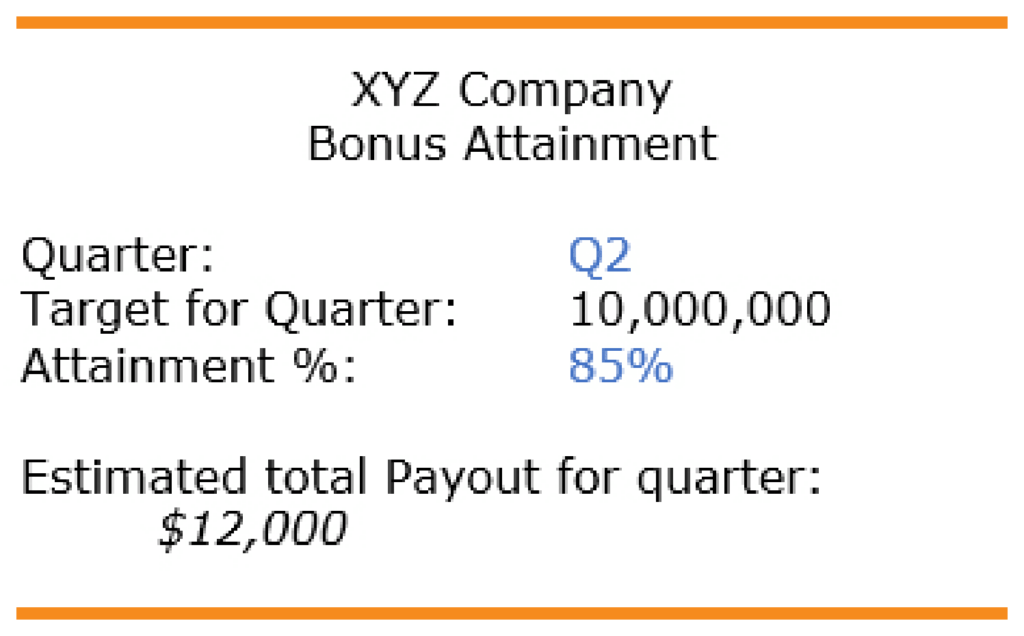Earlier this summer, I posted a series of articles about how managers can use sales calculators to influence sales behavior. My last post highlighted how adding a timing field to your calculator can show reps how take-home pay would change when closing a deal in the current quarter versus closing a deal after a quarter close. In this post, I’d like to talk about using sales calculators to show reps exactly what they need to close in the next week/month/quarter to meet their goals.
Let’s say that the company would like to show reps how they are performing against an individual goal. The calculator may look like this:

The rep can easily see that reaching 85 percent attainment for Q3 will net them a $12,000 bonus. That could be a powerful incentive, but the sales calculator doesn’t tell the rep how close they are to achieving that attainment or how they can actually meet that goal. However, what if we add a few outputs to the sales calculator?

As you can see, adding a remaining balance, a daily average from the previous two weeks and a required daily sales average gives the rep a concrete goal from which to work with. They can see what they’ve been averaging recently and what they’d need to average to achieve the goal they’ve chosen for themselves.
Managers can sit down with reps and use this information to further motivate and influence behavior. Some questions could include:
- If you want to achieve 85%, you need about $3,000 more a day to reach that goal, which client(s) can we have discussions with that can help you with this gap?”
- “What is currently in your pipeline that will help you close this gap to reach your goal?”
- “Look if you push your goal to 86%, you will be paid $5,000 more for the quarter and you only need to sell $300 more a day, just think what you could do with that money.”
- “I want you to reach your goal, what barriers do I need to get out of your way to reach your goal.”
- “I know you are not having a good quarter, but let’s see what you could make if you reached “X” percentage?” “Do you think you can reach that goal for this quarter?”
Making this information available to reps makes asking these questions much easier, giving the manager a starting point for future conversations.
It’s easy to see how sales calculators can be powerful tools to motivate reps and influence behavior. It’s all about collecting the right information and plugging it into a calculator that can show reps the insights they need to make the right decisions. Managers can use calculators as a coaching tool or simply give reps real-time access to their information, so they can self-motivate. Either way, sales calculators can be extremely helpful.





